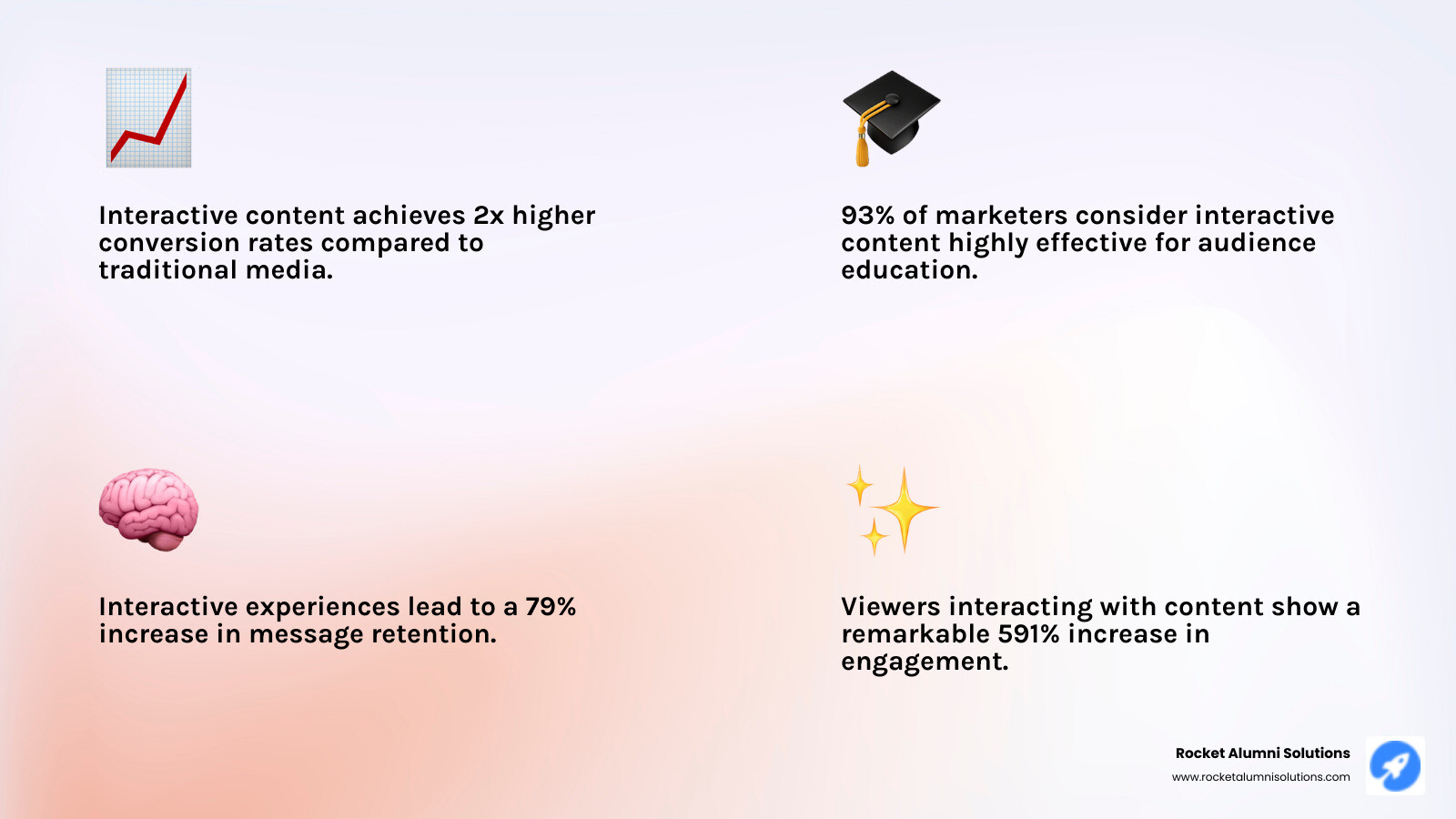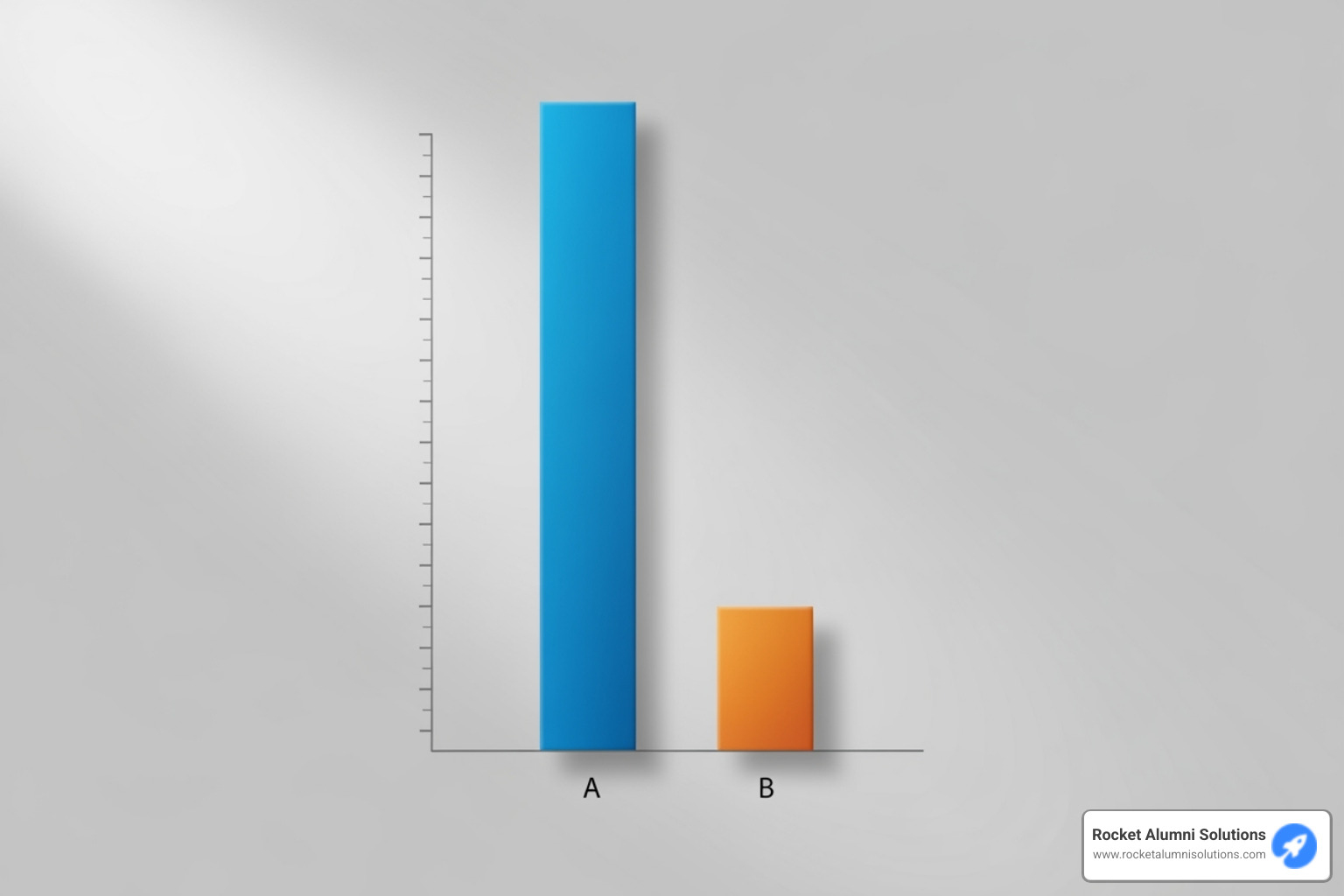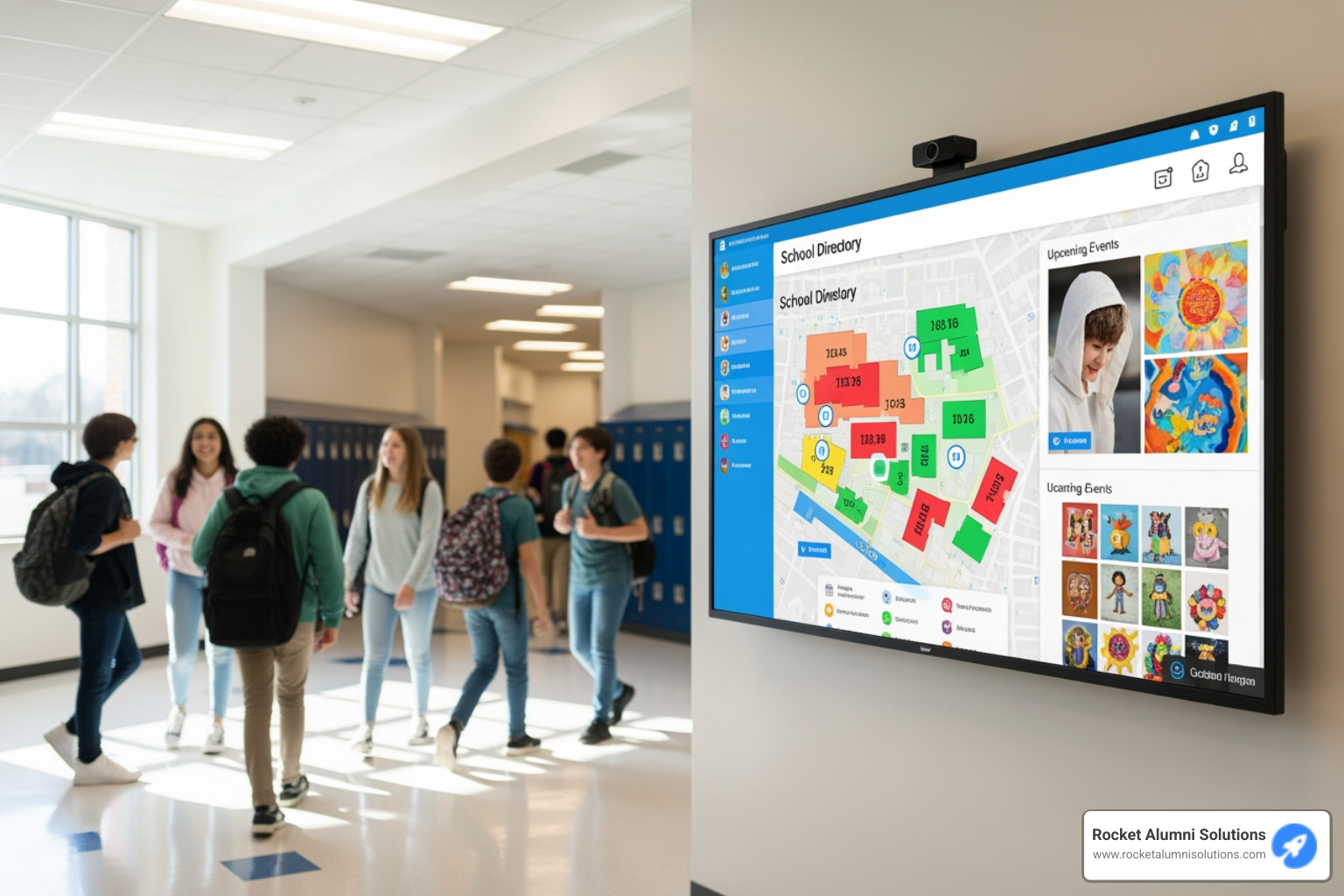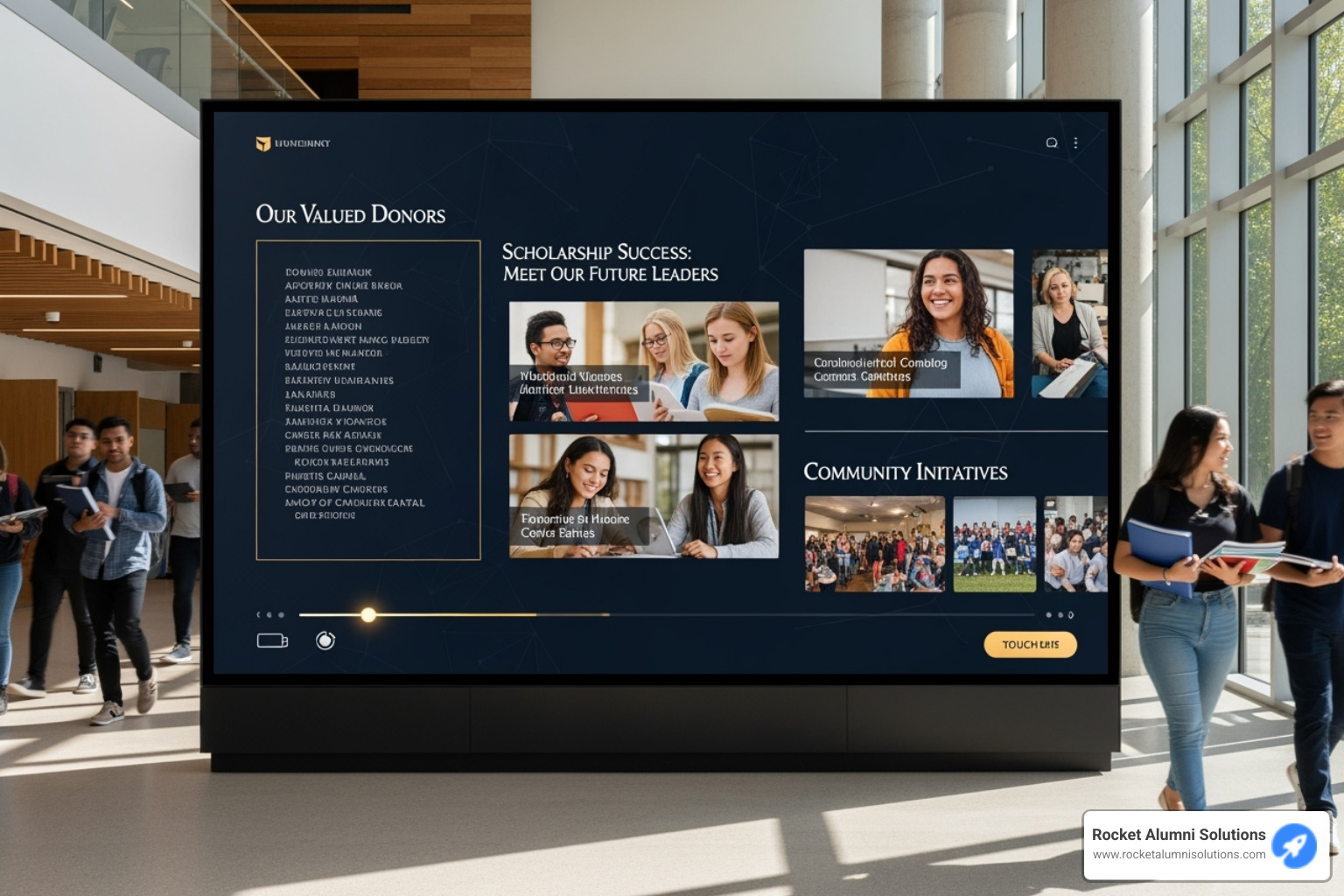From Passive to Participatory: The Digital Engagement Revolution
Interactive media content transforms static information into dynamic experiences where users actively participate rather than passively consume. Unlike traditional media that broadcasts the same message to everyone, interactive content responds to user input, creating personalized experiences that boost engagement, learning, and conversions.
Key characteristics of interactive media content:
- User Control: Viewers can steer, click, and influence their experience
- Real-time Feedback: Content responds immediately to user actions
- Multimedia Integration: Combines text, video, audio, and animations
- Two-way Communication: Creates dialogue between content and user
- Measurable Engagement: Provides data on how users interact with content
The shift from passive to interactive content isn't just a trend—it's a fundamental change in how people expect to consume information. Research shows that interactive content receives twice as many conversions as traditional content, while 93% of marketers find it highly effective for educating audiences.
This change is particularly powerful in educational and athletic communities, where engagement directly impacts learning outcomes and community building. Static displays and traditional yearbooks are giving way to dynamic, touchscreen experiences that invite participation and create lasting impressions.
I'm Chase McKee, founder and CEO of Rocket Alumni Solutions, where we've helped schools and organizations transition from passive recognition displays to interactive media content that engages visitors and builds stronger communities. Through our work with touchscreen donor walls and digital recognition systems, I've seen how interactive elements can increase engagement and create more meaningful connections between institutions and their stakeholders.

Essential Interactive media content terms:
What is Interactive Media Content and How Does It Work?
Think about the last time you took a quiz online or clicked through an interactive story. That moment when you stopped being a passive viewer and became an active participant? That's the magic of interactive media content in action.
This shift from one-way communication to genuine dialogue has revolutionized how we experience digital platforms. Instead of just absorbing information, we now shape it through our choices and actions. Technology has made this possible, creating user experiences that respond to us in real time.
Defining Interactive Media Content
Interactive media content creates a two-way dialogue between you and the digital experience. Unlike traditional media that broadcasts the same message to everyone, interactive content adapts based on your input and preferences.
The key difference is user influence. When you click, swipe, or make choices, the content responds immediately. This creates a dynamic experience where you're not just consuming information—you're actively shaping it.
This personalization makes content more engaging and memorable. Instead of passively watching a video about school achievements, imagine touching a screen to explore different sports seasons, read player profiles, or watch highlight reels based on your interests. That's content that reacts to your curiosity.
The Core Elements of Interactivity
Three essential elements work together to create truly engaging interactive media content.
User control puts you in the driver's seat. Whether you're navigating through a digital yearbook, answering quiz questions, or exploring a virtual campus tour, you decide the path. This sense of agency keeps people engaged far longer than static content ever could.
Real-time feedback creates the conversation. When you tap a button or make a selection, something happens immediately. This instant response maintains momentum and guides you naturally through the experience. Without this feedback loop, interaction feels broken and frustrating.
Multimedia integration brings everything together. Text, audio, video, and animation work as a team to create rich, immersive experiences. According to Columbia University's research on elements of good design, the thoughtful combination of these media types creates cohesive and engaging experiences that stick with users long after they've finished interacting.
The Evolution of Interactive Experiences
The story of interactive media content mirrors the rapid pace of technological change over the past few decades.
The internet revolution of the 1990s planted the first seeds. Early websites featured simple clickable elements and basic forms, but they introduced the concept that users could influence their digital experience. Those text-based adventure games might seem primitive now, but they established the foundation for everything that followed.
Social networking changed everything. The launch of early platforms created spaces where people could connect, share, and interact with content in entirely new ways. The history of social media shows how quickly we moved from simple profile pages to rich, interactive communities.
High-speed wireless internet removed the technical barriers that once limited interactive experiences. Suddenly, videos could stream smoothly, animations could load instantly, and complex interactions became possible on any device.
Smartphones made interaction personal and portable. Your phone became a gateway to interactive apps, games, and content that traveled with you everywhere. Social networking platforms evolved rapidly during this period, as detailed in Facebook's history, introducing features like interactive feeds, games, and personalized content recommendations.
Today, we've moved from simple text adventures to sophisticated virtual reality experiences that can transport you to different worlds entirely. The evolution continues as new technologies emerge, making interactive media content more immersive and accessible than ever before.

The magic of interactive media content goes way beyond just making things look cool. It's actually changing how businesses connect with customers and how students learn in the classroom. When people can touch, click, and participate instead of just watching, something powerful happens.

Boosting Business Growth and Marketing ROI
Let's be honest—getting people's attention today is harder than ever. Everyone's scrolling past ads and ignoring most content. But interactive media content changes the game completely.
When businesses create quizzes, calculators, or interactive videos, something interesting happens. People actually stop scrolling. They engage. And here's the kicker: interactive content generates twice as many conversions as regular static content. That's not just a small improvement—that's doubling your results.
The lead generation benefits are incredible too. Think about it: when someone takes a quiz about their marketing needs or uses a calculator to estimate savings, they're essentially raising their hand and saying "I'm interested." In fact, 76% of buyers will share their contact information to access valuable interactive content. That's much better than hoping someone fills out a boring contact form.
Brand differentiation becomes natural when you're the only company in your space offering something people can actually interact with. While your competitors are posting static images, you're letting customers configure products, take assessments, or explore interactive demos. About 88% of marketing professionals say this approach helps them stand out from competitors.
The customer loyalty impact is equally impressive. When people actively participate in your content, they remember it better. Research shows message retention increases by 79% with interactive elements. People don't just remember what they read—they remember what they did.
But here's something important to remember: with great data comes great responsibility. As you collect more information through interactive experiences, you need to be transparent about how you're using it. Data collection concerns are real, and building trust means being upfront about your privacy practices.
Enhancing Learning Outcomes and Engagement
Education is where interactive media content really shines. Instead of students sitting quietly while someone talks at them, they become active participants in their own learning journey.
Active learning transforms everything. When students can click through scenarios, manipulate variables, or solve problems hands-on, they understand concepts at a deeper level. It's the difference between reading about photosynthesis and actually adjusting light levels in a virtual plant lab to see what happens.
Personalized learning paths mean each student gets exactly what they need. Some kids need more practice with fractions, while others are ready for advanced concepts. Interactive content can adapt in real-time, providing extra support where needed and advancing when students are ready.
Gamification taps into something we all understand: games are fun. When learning includes points, badges, levels, or friendly competition, students engage naturally. They're not being forced to learn—they want to progress to the next level.
The knowledge retention benefits are remarkable. Students remember what they interact with far better than what they simply read or hear. When they actively solve problems or make choices within the content, those experiences stick.
Student engagement soars because interactive content meets young people where they are. They've grown up with touchscreens, apps, and responsive technology. Static textbooks feel ancient compared to content that responds to their input.
Immersive education creates those "aha!" moments that every teacher loves to see. Whether it's virtual field trips, interactive historical timelines, or science simulations, students can experience concepts rather than just memorize facts.
This change is especially powerful in educational communities where recognition and achievement matter. Interactive displays that let students and families explore accomplishments, browse digital yearbooks, or find school history create lasting connections that traditional static displays simply can't match.
Common Types and Real-World Applications of Interactive Content
The world of interactive media content is like a digital playground filled with endless possibilities. Whether you're looking to educate students, engage customers, or build stronger community connections, there's an interactive format that can transform your static content into something truly memorable.
Interactive media content comes in many exciting forms, each designed to solve different challenges and create unique experiences. Quizzes and polls remain incredibly popular because they tap into our natural curiosity—who doesn't want to know "Which Harry Potter house are you?" or share their opinion on the latest trends? These simple formats work so well that 96% of users complete BuzzFeed's sponsored quizzes.
Interactive infographics take data visualization to the next level, allowing users to explore information at their own pace. The Guardian's interactive guide showing how dog breeds are related perfectly demonstrates how complex information becomes engaging when users can click, explore, and find.
Calculators and interactive tools provide immediate value by solving real problems. Whether it's a mortgage calculator or an ROI estimator, these tools help users make informed decisions while capturing valuable lead information. Interactive videos create immersive experiences where viewers can choose their own adventure, click on hotspots, or answer embedded questions—resulting in a 591% increase in engagement when viewers interact with content.
Augmented reality experiences are revolutionizing the "try before you buy" concept, while interactive emails break through inbox clutter with embedded polls, carousels, and dynamic content. Games and gamified content tap into our competitive nature, making learning and brand engagement genuinely fun.
For educational and athletic communities, interactive maps, digital storyly stories, and interactive ebooks create rich, multimedia experiences that go far beyond traditional static displays.
Examples of Interactive Content in Action
The beauty of interactive media content lies in its versatility across different industries and use cases. In education, we're seeing a shift from static bulletin boards and printed yearbooks to dynamic, touchscreen displays that invite exploration and engagement. Schools and athletic communities are finding that interactive recognition walls create lasting impressions on students, alumni, and visitors.
E-commerce brands use product configurators that let customers customize everything from cars to furniture before purchasing. Healthcare organizations deploy interactive patient education modules that explain complex procedures at each person's own pace. Real estate professionals offer virtual tours that allow potential buyers to explore properties from anywhere in the world.
Marketing teams have acceptd interactive content for its ability to cut through the noise. BuzzFeed's quizzes have become legendary for their shareability, while news organizations use interactive timelines and data visualizations to make complex stories more digestible.
Museums and exhibitions now feature interactive kiosks that provide immersive experiences, letting visitors manipulate digital artifacts or dive deeper into exhibits that interest them most.
Why Different Types of Interactive Content are Effective
Each type of interactive media content succeeds because it addresses specific human needs and psychological triggers. Quizzes work brilliantly because they satisfy our desire for self-findy while providing immediate gratification. They're incredibly shareable, turning users into brand ambassadors who spread content across social networks.
Calculators provide practical utility that users genuinely appreciate. When someone uses your mortgage calculator or ROI estimator, they're not just engaging with your brand—they're solving a real problem, which creates trust and positions you as helpful rather than pushy.
Interactive videos captivate audiences by offering richer, more immersive experiences than traditional video content. The ability to make choices or explore additional information keeps viewers engaged significantly longer, creating stronger emotional connections with your message.
Polls and surveys make users feel heard and valued while gathering insights that help businesses better serve their audiences. AR experiences reduce purchase anxiety by letting customers visualize products in their real-world context, while interactive infographics make complex data not just digestible but genuinely interesting to explore.
The key insight here is that interactive media content works because it respects the user's time and intelligence. Instead of talking at people, it invites them to participate, explore, and find—creating experiences that are both more memorable and more effective than traditional static content.
A Practical Guide to Creating and Measuring Your Interactive Media Content
Creating engaging interactive media content doesn't have to feel overwhelming. With the right approach, you can develop content that truly connects with your audience and drives meaningful results. The key lies in thoughtful planning, smart design choices, and continuous improvement.

Essential Steps for Creating Interactive Content
Think of creating interactive media content like planning a great conversation. You wouldn't jump into a chat without knowing who you're talking to or what you want to accomplish, right? The same principle applies here.
Start by defining your goals and knowing your audience. Are you trying to generate leads, educate students, or build brand awareness? Understanding exactly what success looks like will guide every decision you make. Equally important is knowing your audience inside and out—their needs, preferences, and how they like to consume content.
Choose the right format based on these insights. If you want quick engagement, a quiz might be perfect. Need to demonstrate value? A calculator could be your best bet. Want to make complex data digestible? An interactive infographic might hit the mark.
Planning and storyboarding come next, and this step is crucial. Map out the entire user journey from start to finish. Think about every click, swipe, and interaction point. A simple flowchart can save you countless headaches later, especially if you're creating branching narratives or complex user paths.
Gather and organize all your assets before you start building. This includes text, images, audio, video, and animations. Make sure you have the rights to use everything—Creative Commons licenses and stock sites like Unsplash can be lifesavers here.
Select the right tools for your needs and budget. For quizzes, platforms like Qzzr work well. Interactive maps? Try Mapme. Data visualizations shine with tools like Infogram or Flourish. More complex projects might benefit from comprehensive platforms like ThingLink or Outgrow.
Development and testing go hand in hand. Build according to your storyboard, then test everything thoroughly. Check how your content performs on different devices, browsers, and screen sizes. This step isn't optional—a broken interactive experience is worse than no interactive experience at all.
Publishing and distribution should align with where your audience spends their time. Whether that's your website, social media, email campaigns, or digital displays in your community spaces.
Monitor and iterate continuously. Interactive media content isn't a "set it and forget it" solution. Track performance, gather feedback, and use those insights to make your next version even better.
Best Practices for Design and Delivery
Creating great interactive media content is part art, part science. The most successful projects share several common characteristics that you can apply to your own work.
Quality should never be compromised. Invest in professional design and ensure everything works flawlessly. Users have high expectations, and a polished experience builds trust and credibility.
Keep the user experience simple and intuitive. If people need instructions to steer your content, it's probably too complicated. Clear visual cues and straightforward navigation reduce cognitive load and keep users engaged. The user experience principles from Nielsen Norman Group emphasize consistency across different platforms and devices.
Always provide genuine value. Whether your content educates, entertains, or solves a problem, it should leave users feeling like their time was well spent. Empty interactions for the sake of being "interactive" will backfire.
Design for sharing and engagement. Include elements that naturally encourage participation—polls that reveal interesting results, quizzes with shareable outcomes, or tools that provide personalized insights. Interactive media content gets shared 28% more than static content, but only when it's genuinely worth sharing.
Make your content accessible to everyone. This means considering screen readers, keyboard navigation, and clear visual contrast. Accessibility isn't just good practice—it expands your potential audience significantly.
Use multimedia thoughtfully. While combining text, video, audio, and animation can create rich experiences, every element should serve a purpose. Too much multimedia can overwhelm users and slow down loading times.
Overcoming Challenges and Measuring Success
Let's be honest—creating interactive media content comes with its fair share of challenges. But understanding these obstacles upfront helps you steer them successfully.
Cost and time investment often surprise first-time creators. Interactive content typically requires more resources than static alternatives, and you might need specialized skills or tools. However, the higher engagement rates and conversion potential often justify the investment.
Technical complexity can feel daunting, especially when ensuring your content works seamlessly across different devices and platforms. Start simple and build complexity gradually as you gain experience and confidence.
User fatigue happens when interactivity feels forced or overwhelming. The solution? Focus on meaningful interactions that improve the user's experience rather than adding bells and whistles for their own sake.
Measuring success requires looking beyond surface-level metrics. While likes and views matter, dig deeper into engagement rates—users spend an average of 13 minutes with interactive content compared to 8.5 minutes with static content. Conversion rates tell an even more compelling story, with interactive content generating twice as many conversions as traditional formats.
Lead quality often improves with interactive content because users who engage deeply are more likely to be genuinely interested in what you offer. Track time spent with your content, social shares, and direct feedback through embedded surveys or polls.
For educational and athletic communities, platforms like Rocket Alumni Solutions have found that interactive recognition displays create measurable increases in community engagement and pride. The key is choosing metrics that align with your specific goals and tracking them consistently over time.
Every challenge is also an opportunity to create something truly memorable. When done right, interactive media content doesn't just inform—it creates experiences that people want to share and return to.
The Future of Interactivity
We're standing at the edge of something incredible in interactive media content. The technologies emerging today will completely transform how we create, share, and experience digital content tomorrow.
Artificial intelligence is already changing the game when it comes to personalization. Instead of creating one-size-fits-all experiences, AI can now analyze how each person interacts with content and adapt in real-time. Picture an interactive story that changes its plot based on your choices, or educational content that automatically adjusts its difficulty when it senses you're struggling with a concept.
This isn't science fiction—it's happening now. AI is becoming our creative partner, helping us craft experiences that feel personally custom to each user. For schools and athletic communities, this could mean recognition displays that highlight different achievements based on who's viewing them.
Virtual and augmented reality are moving beyond gaming into everyday interactive experiences. We're already seeing AR apps that let you try on clothes virtually or explore historical sites from your living room. VR documentaries place you right in the middle of the action, making you feel like you're actually there.
These immersive technologies offer something traditional content simply can't: the feeling of being present in a completely different world. Imagine walking through a virtual museum of your school's history or experiencing a championship game from the player's perspective.
The integration of interactive elements is becoming seamless. Smart environments that respond to voice commands, digital signs that change their message based on who's looking, and interactive features built right into everyday objects are all becoming reality.
This seamless integration means interactive media content won't feel like a separate "tech thing"—it'll just be part of how we naturally interact with the world around us.
Users are becoming co-creators in ways we've never seen before. Social media showed us that people want to contribute to content, not just consume it. The future takes this even further with collaborative virtual spaces, crowdsourced storytelling, and AI tools that help anyone create sophisticated interactive experiences without needing technical skills.
For educational and athletic communities, this means students and alumni could contribute to digital yearbooks, add their own stories to recognition displays, or help build interactive archives of school memories.
The future of interactive media content isn't just about better technology—it's about creating more meaningful connections between people and the content they experience. Every advancement we're seeing points toward a world where digital experiences feel more personal, more engaging, and more human than ever before.
Conclusion: Start Your Interactive Journey
We've explored the exciting world of interactive media content together, and what a journey it's been! From understanding how it transforms passive viewers into active participants to seeing real-world examples that boost engagement by 591%, it's clear that interactive content isn't just a trend—it's the future of digital communication.
The numbers tell a compelling story. Interactive content delivers twice as many conversions as static content, increases message retention by 79%, and meets the growing demand from users who crave more engaging experiences. When 93% of marketers find it highly effective for educating audiences, and 90% of users actively want more interactive content, the message is crystal clear.
Whether you're creating engaging quizzes that people can't help but share, building useful calculators that solve real problems, or developing immersive videos that captivate viewers, the power lies in creating genuine connections. Yes, there are challenges like development costs and technical complexity, but with careful planning and the right approach, the returns far outweigh the investment.
For schools and athletic communities, this shift toward interactivity opens up incredible opportunities. Traditional static displays and printed yearbooks are giving way to dynamic, touchscreen experiences that invite participation and create lasting memories. At Rocket Alumni Solutions, we've seen how interactive media content can transform recognition displays into celebrated experiences that truly resonate with students, alumni, and visitors.
Our customizable, tech-free solutions—from animated flip books to digital yearbooks with social media integration—turn traditional recognition into something special. It's about more than just displaying achievements; it's about creating connections and celebrating success in ways that feel meaningful and modern.
The future looks even brighter, with AI-driven personalization and immersive VR/AR experiences on the horizon. These technologies will make interactive content even more engaging and accessible. The time to accept this digital revolution is now, not later.
Ready to see what interactive media content can do for your community? Your audience is waiting for experiences that engage, educate, and inspire. The shift from passive to active consumption is happening whether we participate or not—the question is whether you'll lead the way or follow behind.
Explore our award-winning digital showcase solutions and find how we can help transform your displays into dynamic experiences that your community will remember and celebrate for years to come.



















































































































































































































































































































